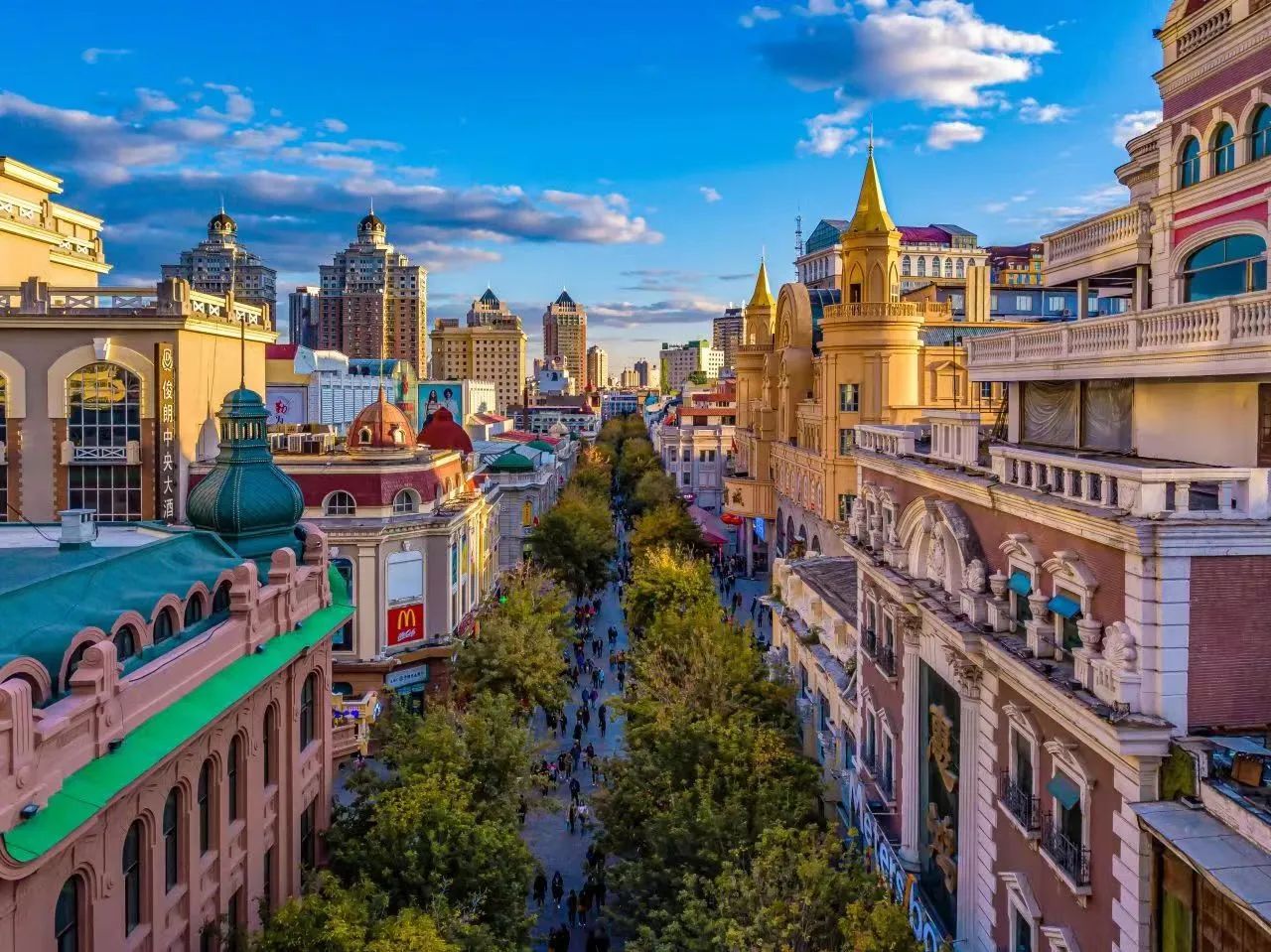Heilongjiang stands out for its world-famous ice and snow landscapes, as well as its vibrant mix of ethnic minorities and unique cultural appeal.
Recently, some foreign bloggers in China have popularized the phrase “city不city啊” and “好city啊,” a mix of English and Chinese accompanied by a playful tone. These phrases have gone viral on social media, sparking widespread sharing among both Chinese and international audiences. This fresh, interactive approach not only showcases a multifaceted and lively China to a global audience but also adds new excitement to Heilongjiang’s inbound tourism market. Experiential travel is helping foreign visitors understand Heilongjiang better.
- Harbin
 From the winter ice and snow spectacles to the European-style summers, Harbin consistently surprises and delights tourists. The city is open, inclusive, fashionable, dynamic, and ecological. As one of the top 20 summer destinations worldwide, Harbin’s average summer temperature hovers between 18 and 22°C, offering a cool and comfortable climate. The city boasts abundant forests and wetlands, earning it the nickname “natural oxygen bar” and a designation as one of the world’s first “International Wetland Cities” by the Ramsar Convention. In the past, people from dozens of countries lived in Harbin, and the architectural styles along Central Avenue—including Baroque, Renaissance, Eclecticism, and Art Nouveau—reflect this rich history. The avenue has been dubbed an “outdoor architectural museum,” where even security guards can speak Russian fluently with tourists. This blending of cultures also fostered a unique culinary scene, with Russian cuisine standing out as an essential part of Harbin’s food culture for nearly a century.
From the winter ice and snow spectacles to the European-style summers, Harbin consistently surprises and delights tourists. The city is open, inclusive, fashionable, dynamic, and ecological. As one of the top 20 summer destinations worldwide, Harbin’s average summer temperature hovers between 18 and 22°C, offering a cool and comfortable climate. The city boasts abundant forests and wetlands, earning it the nickname “natural oxygen bar” and a designation as one of the world’s first “International Wetland Cities” by the Ramsar Convention. In the past, people from dozens of countries lived in Harbin, and the architectural styles along Central Avenue—including Baroque, Renaissance, Eclecticism, and Art Nouveau—reflect this rich history. The avenue has been dubbed an “outdoor architectural museum,” where even security guards can speak Russian fluently with tourists. This blending of cultures also fostered a unique culinary scene, with Russian cuisine standing out as an essential part of Harbin’s food culture for nearly a century. - Qiqihar
 Foreign visitors to the “international barbecue capital” of Qiqihar are often amazed by this city. Qiqihar’s barbecue is so flavorful that it’s a must-try for anyone visiting the city. The lush greenery and picturesque waterways resemble an elegant Chinese ink painting. The Zhalong National Nature Reserve is the largest of its kind in Asia and the fourth-largest in the world. It’s also the largest reed wetland in the world, providing a habitat for the famous red-crowned cranes and other waterfowl.
Foreign visitors to the “international barbecue capital” of Qiqihar are often amazed by this city. Qiqihar’s barbecue is so flavorful that it’s a must-try for anyone visiting the city. The lush greenery and picturesque waterways resemble an elegant Chinese ink painting. The Zhalong National Nature Reserve is the largest of its kind in Asia and the fourth-largest in the world. It’s also the largest reed wetland in the world, providing a habitat for the famous red-crowned cranes and other waterfowl.
- Mudanjiang – Suifenhe

Chinese and Russian students learn guzheng.
In the summer, Suifenhe, a century-old border town with a distinct foreign flair, bustles with tourism activity. Even Russian children can be seen setting up stalls in Suifenhe. You might encounter Russian students enjoying interactive language classes in local schools, where laughter and music abound. Suifenhe’s railway port is a crucial entry and exit point for China-Europe trains along the “Eastern Route” and the only national scenic area that crosses an international border. Over a hundred years ago, Suifenhe became China’s first open port to the outside world when the entire China Eastern Railway line was completed. This town has many historical buildings and is full of Russian tourists looking to experience traditional Chinese medicine services, such as acupuncture, cupping, massage, moxibustion, and herbal treatments.

Former site of Chichaoguov Tea House.
- Jiamusi


Anna, an international student from Tsinghua University, shared her enthusiasm for Tongjiang in a video and article on CGTV. She views Tongjiang as more than just a city; it’s a cultural bridge between China and Russia. Walking through Tongjiang, you’ll see many shop signs in Russian. The friendly locals exemplify hospitality, and the shop signs tell stories of friendship that transcend time. Tongjiang is gearing up for its second “Eastern Light” China-Russia Cultural Season and the tenth China-Russia Border Culture Season. On July 13, the festivities will include a royal circus, a waterfall of fireworks, and a vibrant night market.
Tongjiang is gearing up for its second “Eastern Light” China-Russia Cultural Season and the tenth China-Russia Border Culture Season. On July 13, the festivities will include a royal circus, a waterfall of fireworks, and a vibrant night market. - Heihe

China-Russia ethnic customs park.
Since June, Heihe Border Inspection has reported an average of 2,500 people crossing the Heihe River daily, with nearly 260,000 border crossings recorded this year.

Wudalianchi volcanic group.
To enhance the tourist experience, Heihe offers unique summer travel options: the “Big Circle” tour route within China includes Aihui Ancient City, the China-Russia National Cultural Park, and eight other travel routes offering hunting, cold-water fishing, and more.

Aihui-Tengchong China population geographical demarcation line theme park.
The “Small Circle” tour leads to the Wudalianchi Scenic Area for a wellness journey centered around mineral springs.

Heilongjiang Bridge.
The attractions featured on Heilongjiang’s summer tourism e-map, released by the Heilongjiang Provincial Department of Culture and Tourism, include the Aihui-Tengchong Geographic Center Line Theme Park and other sights.